Motion vs monday.com: A Comparative Guide in 2024
Monday Vs Motion
18th Aug, 2024

Discover key insights in our comparative guide between monday.com vs. Motion - ideal for small teams seeking the best in project management.
In this feature, we're going to explore the differences between Motion and monday.com. We're looking at this from the lens of finding the project management software for smaller teams, as these are two popular options on the market.
What we want to do is really establish what the differences between both of these applications are and what makes the best solution for you and your team. We can look at elements like efficiency, communication, and organization, as well as where and what aspects of each tool are good for small teams.
We're going to compare interfaces, features, integrations, and how scalable it is if your team grows from a small team, and also look at pricing as well, so that you can establish the best roundup for picking which one works for project management.
Quick Rundown: The Contenders
Let's look at the two options before we begin to give you the basics:
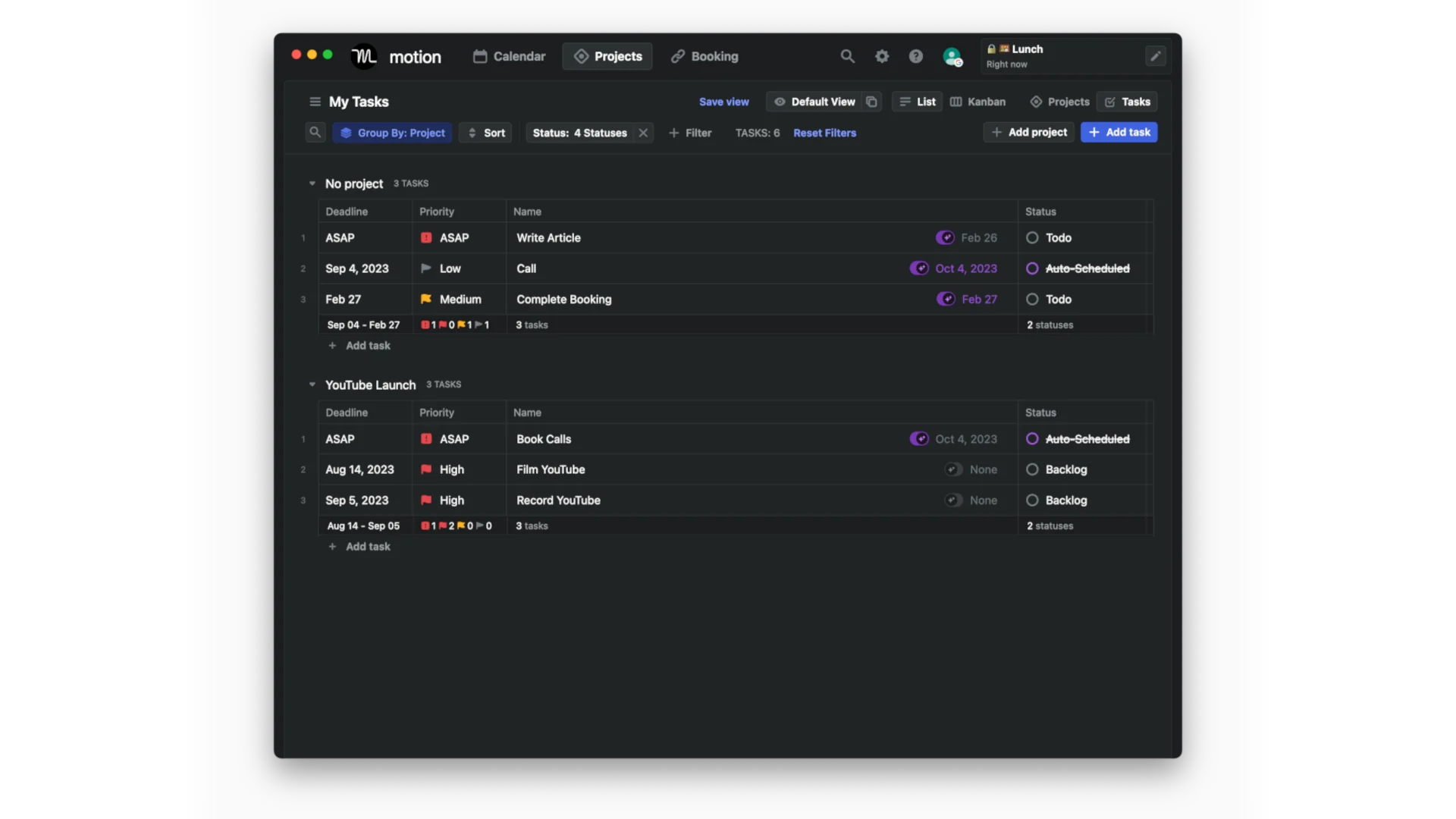
- Motion is well-known in the market as one that has been rapidly growing over the last couple of years, and more recently, they've introduced better and more accessible project management functions, coming at a much cheaper price than the actual individual usage.
- This is something that allows you to manage projects in a small team, which is probably the limitation of about 25 people at max, of using this project management software. We're going to compare what it looks like in comparison with monday.com, which is a little bit more scalable, but which one is best suited for your team.

- On the other hand, monday.com has been around for some time and works well for not only small teams but larger teams as well. Will this be the sway between choosing this or Motion, or will it be more suitable for you to go with something a little bit smaller and more robust?
- So, we're going to explore some of the vast features that are available inside of monday.com and whether any of the pricing plans limit you as a small team from accessing that functionality that Motion might have.
Which is Better for Small Teams?
For a small team, what you're looking for is a range of abilities. You want the project management software that you choose to have a ton of features so that the team can express information at a fast rate.
Do you want to have integrations with existing tools that you might be working with? And if your team grows, which might be an option for you, you want to have the scalability of the platform to do so, even if it's from 3 to 20.
It all really is very important, and finally, pricing, as a small team, and the project management software is actually very important. So, we're going to cover all these aspects in the next segment.
Features: How do they stack up?
So, both of these platforms are good for features; however, there are a few more abilities that you can manage inside of monday.com:
Motion: Features
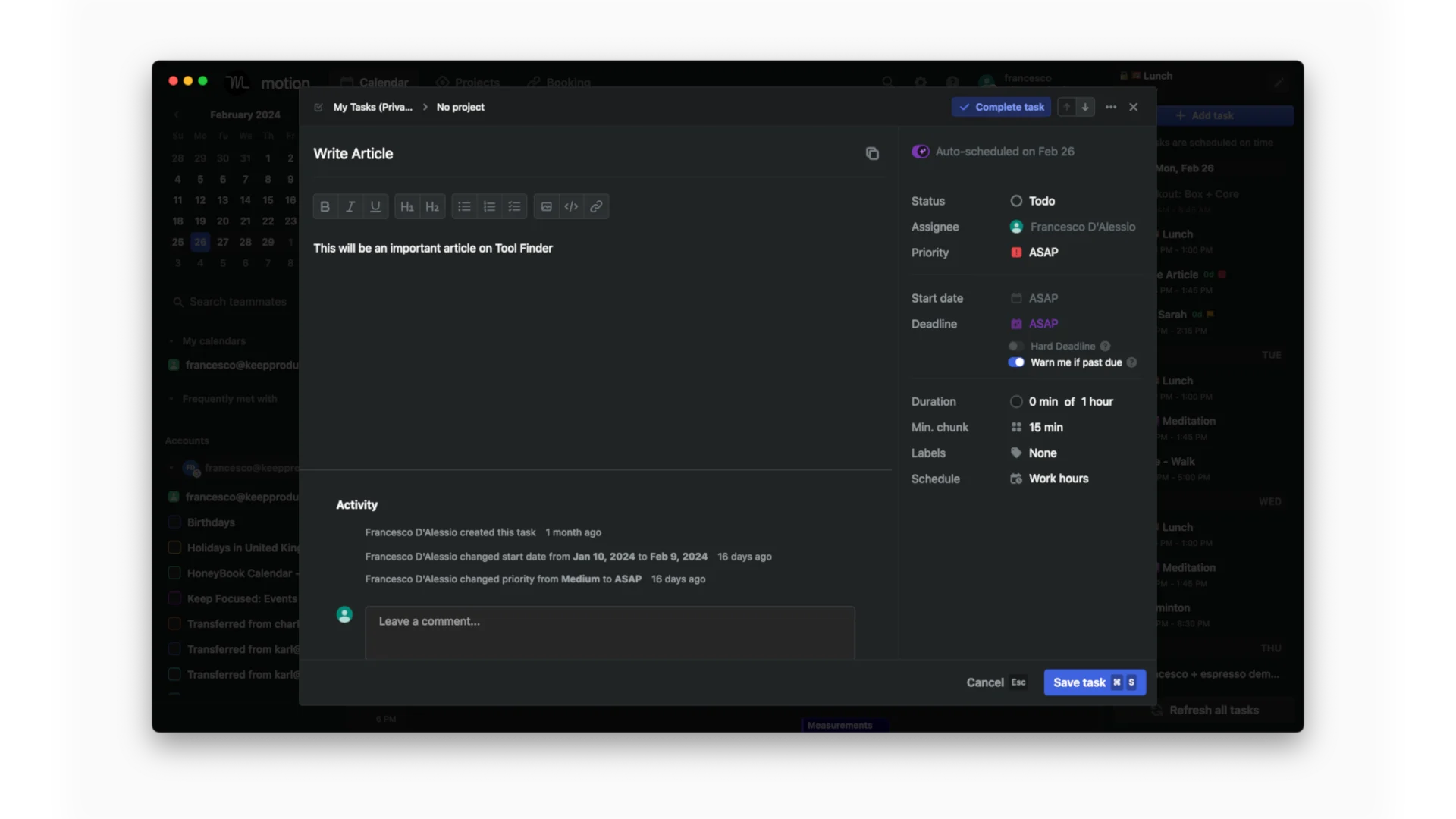
- Let's first look at Motion and the features that are important. Motion is something that is firmly based in task management. It has a unique USP that focuses on AI, which allows you to schedule and plan your day ahead. This can be very helpful for those that you collaborate with on projects.
- For example, if you go ahead and manage projects or tasks, those tasks that you assign to your team members can be automated and prioritized for each team member in the group. This is incredibly helpful so that you can see all of the calendar events, book meetings externally, and also have the ability to see all of the projects, but have the layer of AI to structure their day ahead.
- For a lot of people, especially in teams, those features are particularly helpful because they help structure their day without overly complicating the project management process, which some project management software can do, and even for some teams that aren't looking for a great deal, that can be a factor.
monday Features
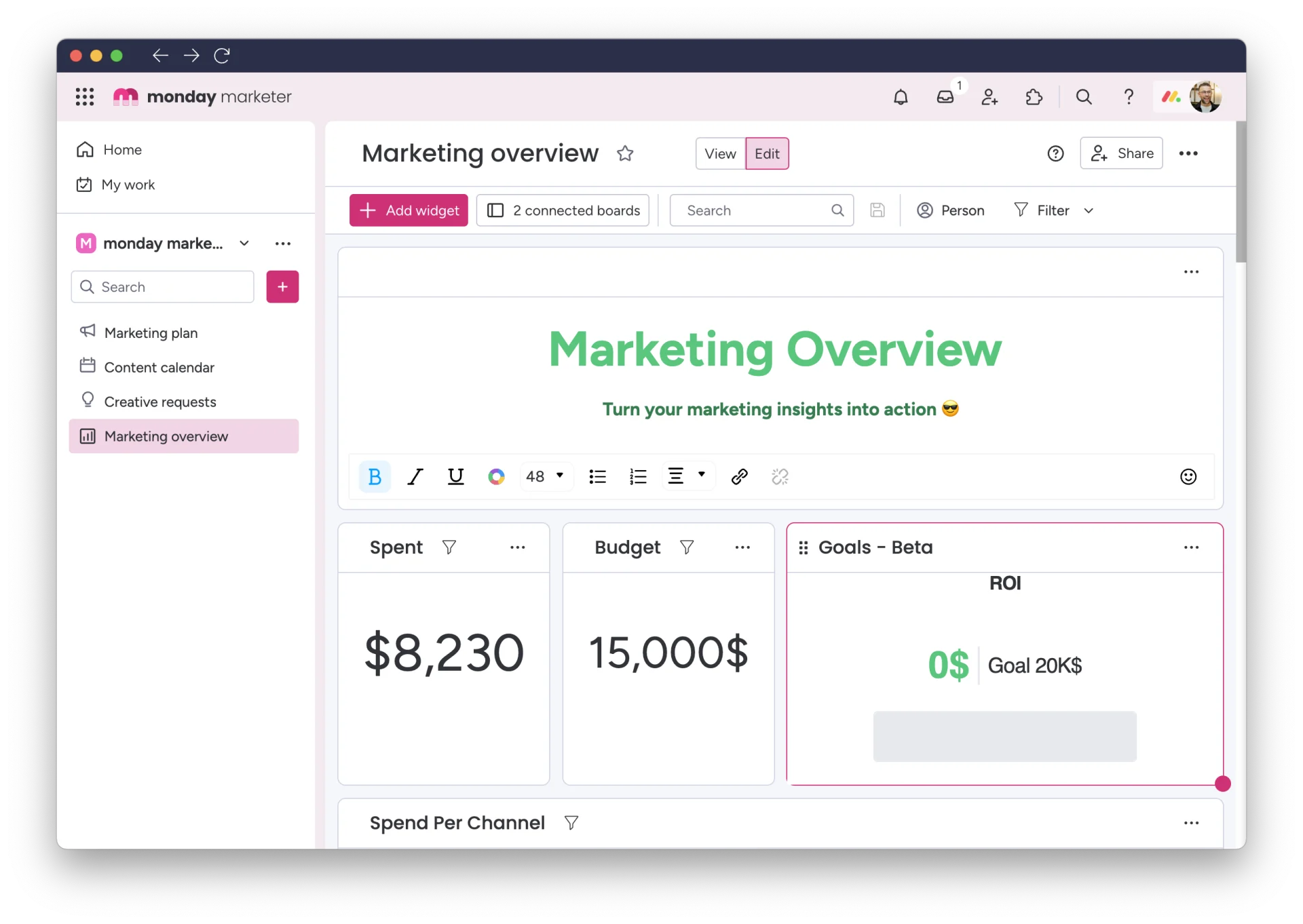
- Looking at monday.com, they have a pretty advanced rate of features, and it's typical of what project management software delivers. If we look at monday.com's Standard plan, which will probably be the pricing that small businesses and teams go for, it has an array of features like the timeline and Gantt, which is something you will not get inside of Motion.
- There's also a calendar view, which you do get in Motion, as well as up to 250 actions per month for both automations and integrations. There aren't many of these inside of the lite version of Motion, and it's something that differentiates when it comes to doing simple processes in steps that you might want to be doing as a small team to save your valuable time so that you can work on new projects.
- There is also guest access, which is not available through Motion, which works very well if you work externally with clients.
Round-up
When looking at both Motion and monday.com, the features are a bit different. While Motion does have project management abilities, which monday.com also has, it has a much more structured focus towards task management and is focused on automatically scheduling your employees' day ahead, which for some people might be a different focus than they have and one that they may not need the more advanced project management structures to have.
So again, it's important to remember that while monday.com does look much more impressive in terms of the features and offering a range of abilities, including managing your projects in a vast array of views, Motion does offer a much more focused experience when it comes to tasks and projects, with the ability to manage boards, lists, take notes so that you can share project and task notes with team members, attach files, as well as comment so that you can communicate with team members.
It's also a much more structured space in terms of having workspaces and templates that you can use in collaboration.
Integrations: Are there limitations?
When looking at integrations, this is very important for small businesses and teams because you might have integrations with popular software that you use every single day, whether that be for managing sales CRM or maybe coordinating design files. So, this is all very important to make sure you've got aligned:
Motion Integrations
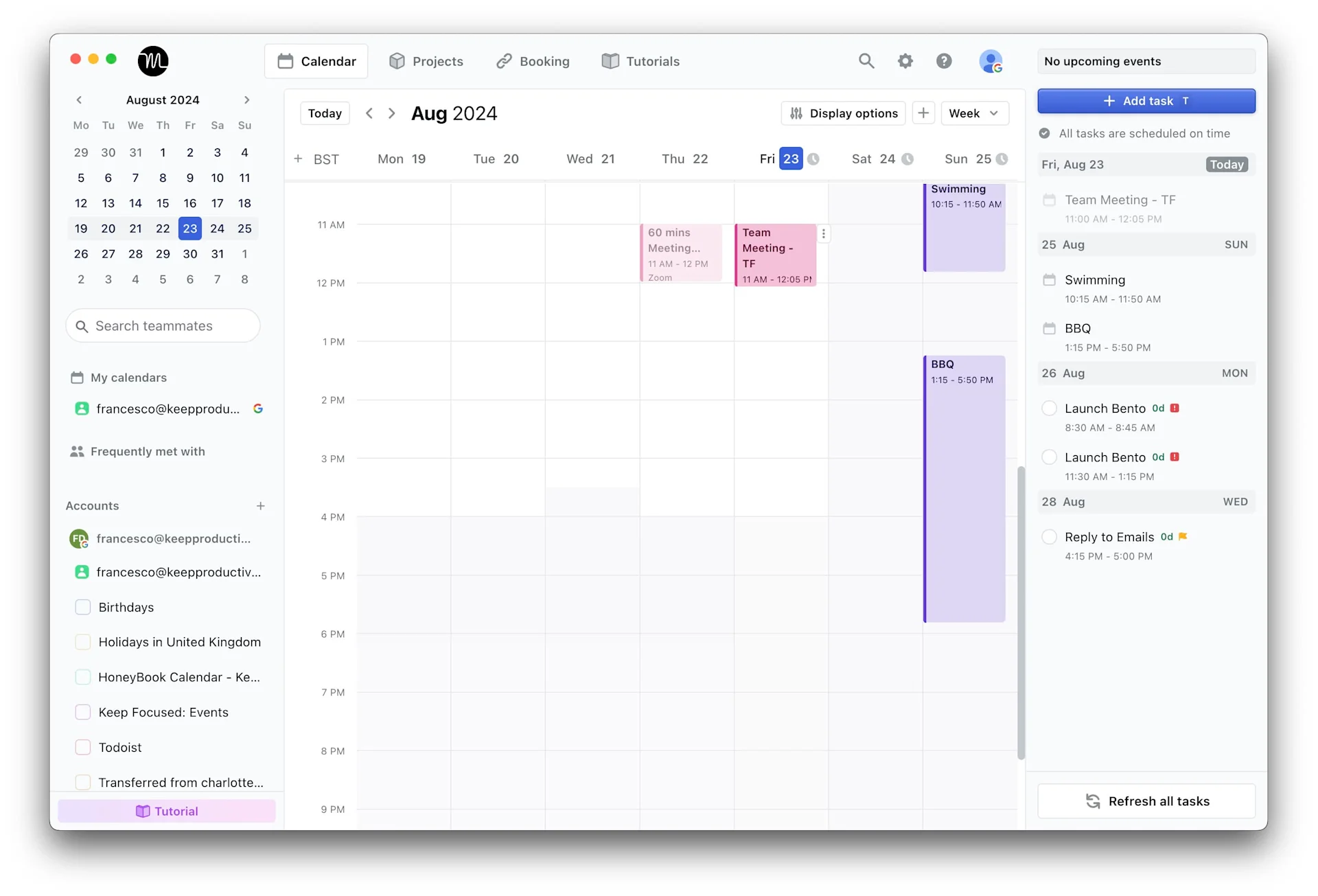
- Motion has a few integrations, about nine in total, that connect with more popular tools like Calendar, Zoom, Zapier, Gmail, Microsoft Teams, Google Meet, Microsoft 365, iCloud, and Siri. Meanwhile, monday.com has over 200, and it's quite interesting because monday.com doesn't only offer integrations but offers ways that you can utilize the App Store that they have, which has a range of features built specifically for monday.com.
- For example, there are smaller elements and features that are built, like the ability to easily convert your emails into monday.com items from Gmail, and also the likes of the ability to easily share and review feedback on videos, images, documents. The range of abilities within the marketplace on monday.com is quite vast, whereas the API naturally is something that isn't as accessible inside of Motion because the platform is less popular as a collective project management experience.
monday.com Integrations
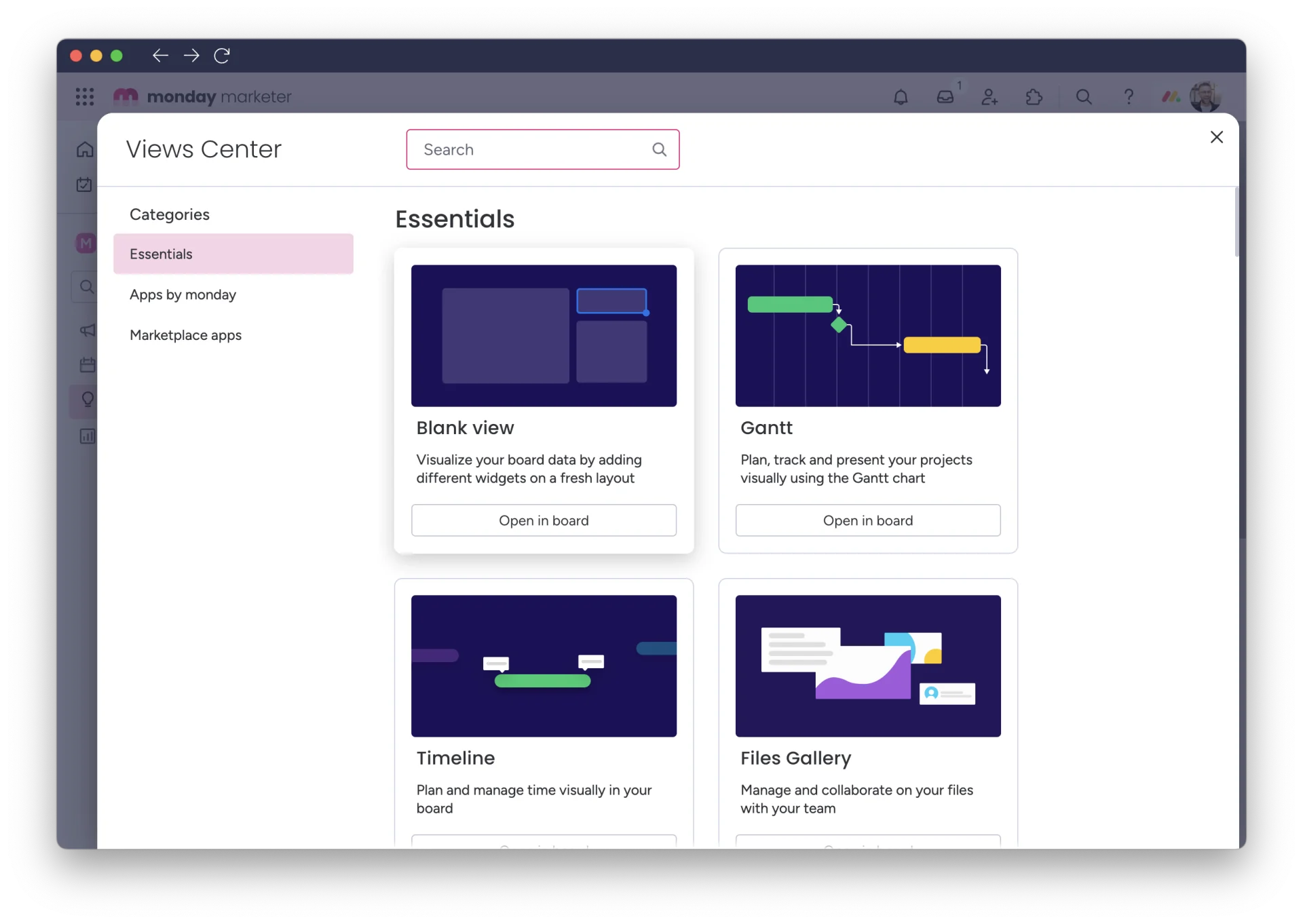
- So, monday.com does offer much more in terms of integrations and functionality. However, note that there will be some limitations in the plans as compared to Motion, which has unlimited access to the integrations that it does have.
- You will be limited to 250 actions per month on integrations and automation separately, which are in the monday.com Standard pricing. So, just be aware of this because naturally, this will adapt and change over the years, but of course, it's a limitation that will continue to carry on.
Scalability: Which is better long-term?
I think when looking at both Motion and monday.com, the features are a bit different:
- While Motion does have project management abilities, which monday.com also has, it has a much more structured focus towards task management and is focused on automatically scheduling your employees' day ahead, which for some people might be a different focus than they have and one that they may not need the more advanced project management structures to have.
- So again, it's important to remember that while monday.com does look much more impressive in terms of the features it offers, providing a range of abilities, including managing your projects in a vast array of views, Motion does offer a much more focused experience, coming to tasks and projects with the ability to manage boards, lists, take notes so that you can share project and task notes with team members, attach files, as well as comment so that you can communicate with team members. It's also a much more structured space in terms of having workspaces and templates that you can use in collaboration.
- When it comes to the scalability of both of these tools, if you're moving from, say, 3 to 20 in your team and it's very task management-oriented, I think Motion is scalable up to a point. Obviously, it really depends on where you push it and how you structure it, but likely it can go to the size you need it to.
- For example, if you and your team were committed to bringing 100 people on board to utilize Motion, then this is a good tool because it does scale. However, I'm not sure whether the scalability is as powerful as something like monday.com. For example, monday.com is, sadly, only limited to three minimum users when you're getting started, meaning you need three paying members to get the ball rolling, whereas in Motion, you can have two to join the team plan. This is something to note.
- But most importantly, monday.com is much more scalable when it comes to the structure of the experience, with templates, integrations, and a project management workflow and system that is more traditional in nature and not just focused on the task management elements. For example, Motion only has a limit with boards and views like a list that structures Motion and does limit you to some of the abilities that you would get with the various views inside of monday.com like table, list, dashboards, Gantt, timeline, and more, which are accessible through the Standard plan.
It's important to note that I do believe that monday.com is much more scalable than Motion when it comes to utilizing it in much larger groups and your small team is growing fast.
Pricing: How do they compare?
When it comes to value for money in terms of using the likes of Motion and monday.com, I would say that the best option is going with the Standard plan for monday.com, which is the same price as Motion for three users on the monthly plan billed annually.
So, this is something to consider. As project management software, monday.com offers much more in terms of features than Motion, and it comes out to pretty much the same price for much more in the package. So, in this case, we would probably say monday.com is better for you.
Motion current pricing

- Individual Plan: $19 per month (billed annually) or $34 billed monthly.
- Team Plan: $12 per user per month (billed annually) or $20 per user billed monthly.
monday.com current pricing
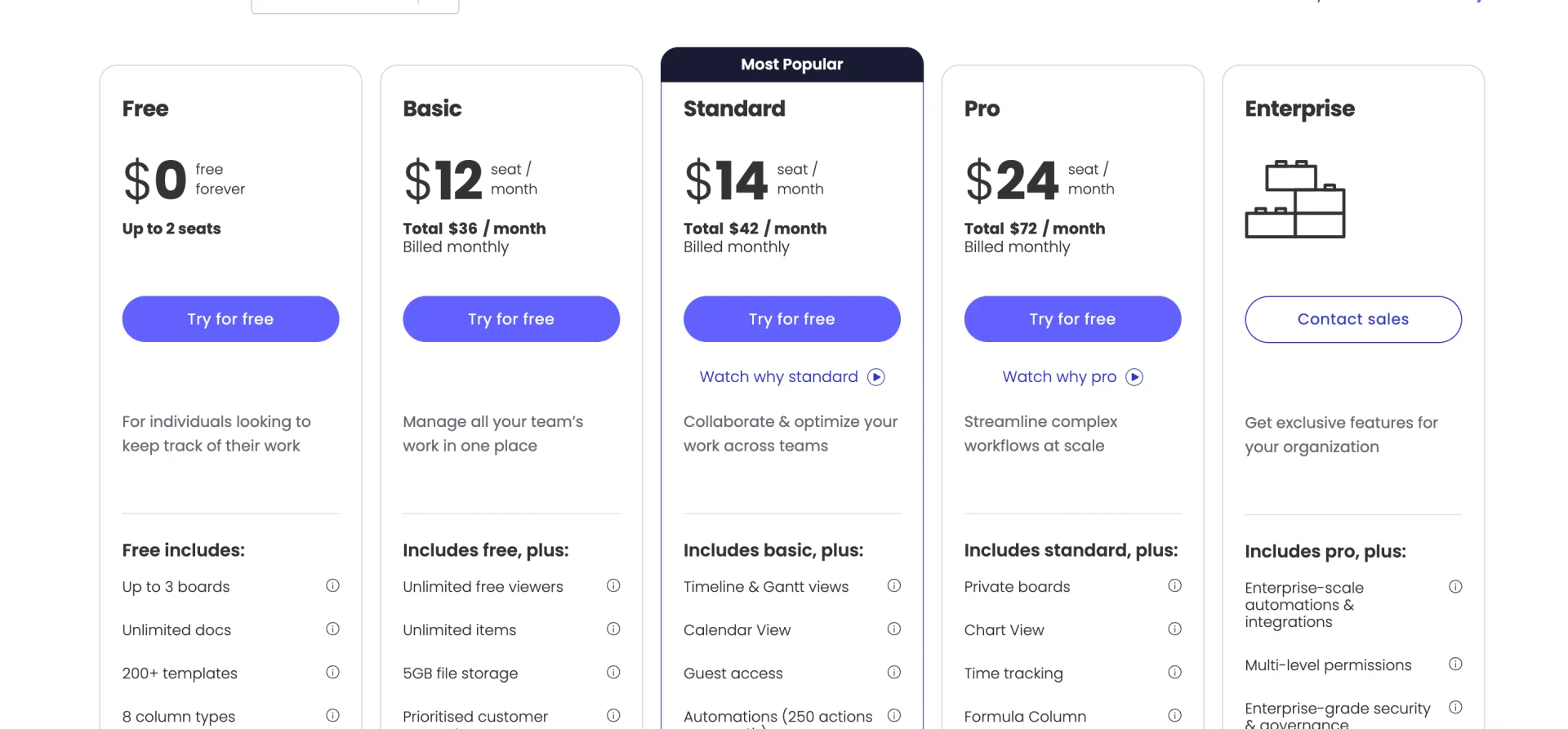
- Free Plan: $0 for up to 2 users.
- Basic Plan: $27 per month for 3 users (billed annually).
- Standard Plan: $36 per month for 3 users (billed annually).
- Pro Plan: $57 per month for 3 users (billed annually).
- Enterprise Plan: You need to contact their sales team for pricing.
Verdict: What's Better?
So, if you're evaluating these project management tools for your small business, we'd probably recommend looking at monday.com unless you know you and your team typically work best with task management processes.
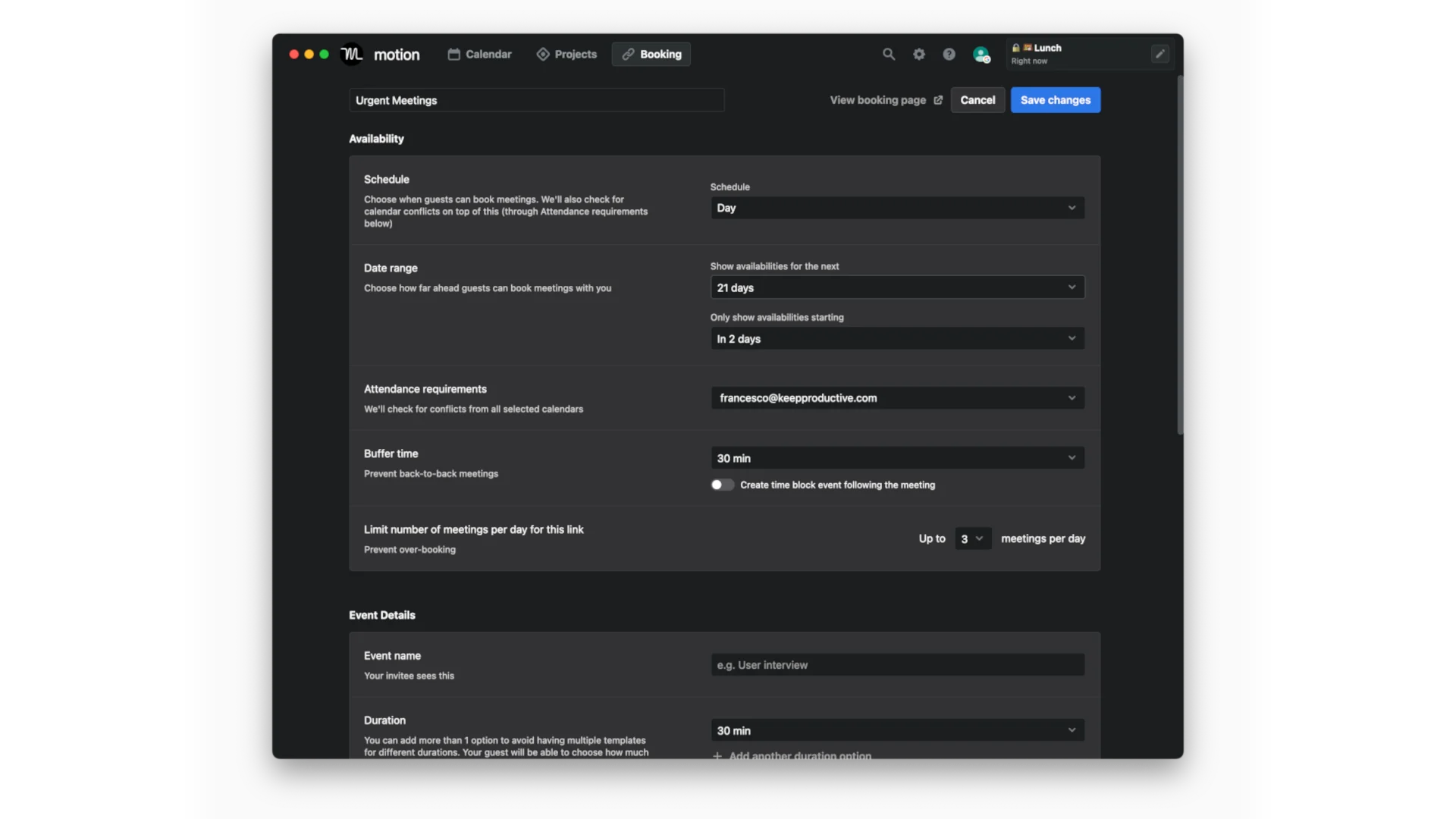
Motion does have a very good element to it, like for example, they are very good at focusing on quality task management processes, and the AI functionality is very helpful. But, to be honest, when you compare it to some of the functionality, views, abilities, and integrations that you get with monday.com at the same price, monday.com is a much better bet for the longer term and a better bet for the functionality you do get.
Motion will be good if you and your team are looking for a structured way to manage your work and don't need some of the views and options and integrations that you typically get with project management software. However, this is not as common, and offering a wide range of features is probably better all around.
Oops, undefined is still in development...
Weekly Roundup: Explore People's Productivity Tools
Become a reader to our newsletter exploring what productivity apps people use on a daily basis to get things done